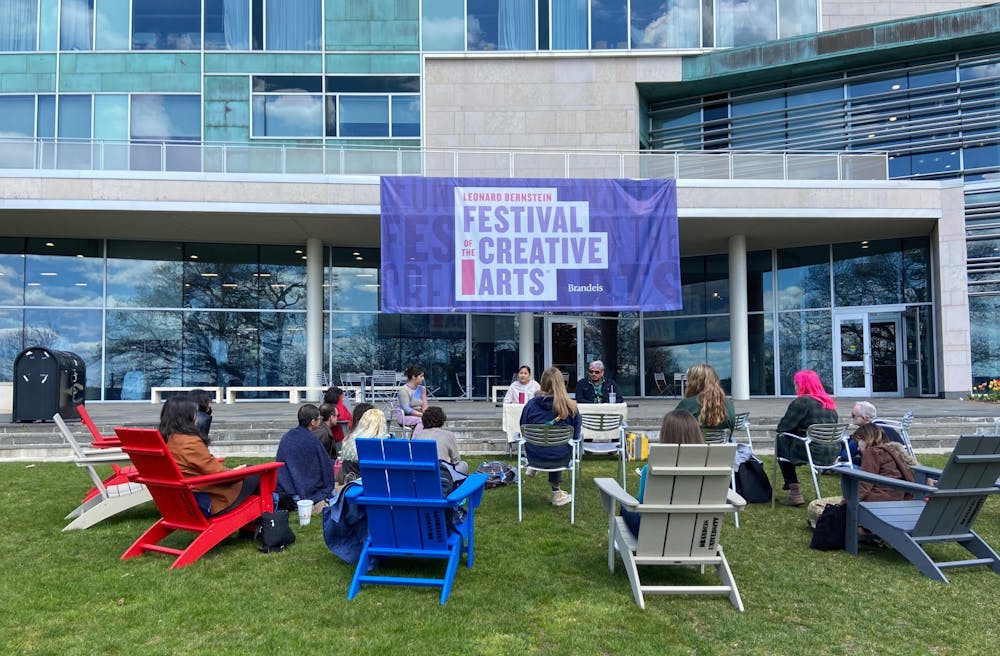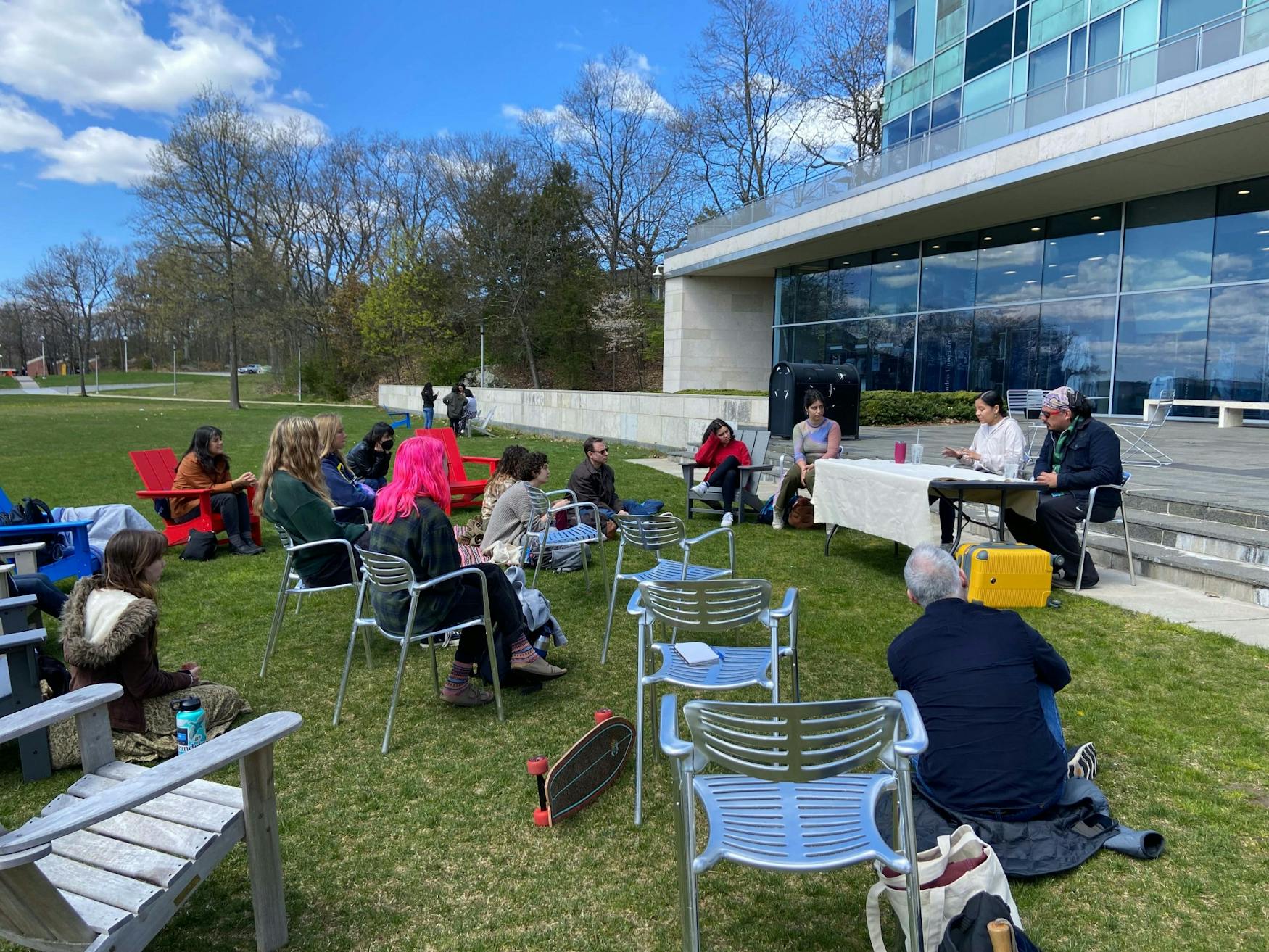Racial and environmental: interconnected justices
One of the highlighted events in the Leonard Bernstein Festival of the Arts — Community Talk & Art Build for Indigenous Futures — took place Saturday, April 20 and was hosted by Brandeis Climate Justice. The panel that started the event featured guest speakers Prof. Evangelina Macias (WGS) and Jean-Luc Pierite, the president of the Board of the North American Indian Center of Boston. The panel was facilitated by Marissa Small ’22, a student of Art History.
Pierite introduced the North American Indian Center of Boston and its founding mission to the group, which is “to empower the Native American community with the goal of improving the quality of life of Indigenous peoples.” The members of the center are dedicated to educating the Greater Boston area about the Indigenous community, assisting members of the Indigenous communities in career-related training, and advocating for environmental justice. He also pointed out that while the United States had re-ratified the Paris Agreement, the abstract guidelines of the statement hindered more aggressive steps to improve situations for the Native American communities and climate justice. In fact, in the latest U.N. Conventions, the majority of the Indigenous delegates were not allowed to enter the conference due to their vaccination status, “leaving the room to be filled with white, fossil-fuel lobbyists.”
According to Pierite, the exclusion of the Indigenous population from environmental conversations is problematic, as it imposes not only a threat to racial justice, but also ecological justice. “Many tribes are not recognized by the Federal or local governments,” he continued. “But they are often at the frontline of global climate change.” While the growing awareness of the issue is leading to more prevalent initiatives for land acknowledgement across the country, it is also clear that we must contemplate on “how to go beyond the platitude and put things in actions.”
Considering the question “in what types of creative expressions?” Macias also jumped in to discuss the importance of creative expression. She recounted her experience speculating archived photos and discovered one of people dressing up for the Sun Dance when the practice was still illegal in 1883. Seemingly a celebration for the Fourth of July, the participants of the photos were in fact taking advantage of the occasion to practice the ceremonious dance. She stated sentimentally, “The dance never ceased. Bodies are containers that remember the traditions.”
On the subject of education for Indigenous youth, Macias expressed her concerns for students from Indigenous communities who are leaving home for school for the first time. Speaking from her experiences mentoring Indigenous students, she pointed out that New England universities, while not short on talks about inclusiveness, may still appear cold or distant. Many of the Indigenous students come from out of state or out of New England; thus, losing the connection with their community may be extremely stressful for them. In comparison to New England, Macias described that for its geographical proximity to tribe-concentrated regions, her alma mater University of California, Riverside is one of the few schools in the nation that has strong connections to Indigenous communities, which leads to their extremely developed Native American Student Program. “The ultimate problem,” Macias asserted, “is that there are no indigenous communities on campus” in which they could seek support or with which they could connect, and “an Indian connection for them may make all the difference.” Building on Macias’s concerns for Indigenous students, Pierite asserts that the challenge for Indigenous students seeking higher education stems from their anxieties about “needing to help out at home with work” or “how much work they could do rather than going to schools in New England.”
The panel also spent some time discussing the lack of resources in funding Native American studies at the University. Priding itself as a university advocating for racial justice and equality, Brandeis has not put in enough effort in starting a department dedicated to Indigenous studies. In President Liebowitz’s letter to the Brandeis Community in April 2021, he announced the formation of a “university wide Indigenous Land Statement Committee which will be tasked with developing an accurate and informative statement that acknowledges indigenous land on which Brandeis University resides.” While this was an important step for the University to honor the indigenous presence and ownership of the land, there are very few further actions takenIby the University. The panel had a thought-provoking discussion about how the University can support its indigenous students. Pierite suggested that there is a necessity in contemporizing ecological knowledge ta

ught in institutions, and the establishment of Indigenous studies programs that are multi-disciplinaryare a step in that direction. Prof. Thomas King (ENG), an attendee of the panel, addressed the difficulties for white faculty, who are required by the University to teach such subjects in class; faculty are limited to teaching the subject through academic and cold methods, despite their support for the Indigenous communities. He also highlighted the importance of employing more instructors from Indigenous communities.



Please note All comments are eligible for publication in The Justice.